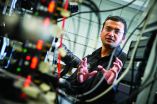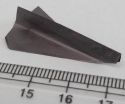(Press-News.org) This news release is available in French.
Montreal, November 11, 2014 -- Regardless of whether a business has been in the family for one year or one thousand, the person in charge typically hopes that handing the reins to a close relative will ensure security for future generations. But that's easier said than done, given that 30 per cent of firms make it to the second generation of family ownership, and only 12 per cent make it to the third.
Concordia University management professor Peter Jaskiewicz believes there's hope for business owners who stay current by focusing on entrepreneurship in succession planning.
For the study, published in Journal of Business Venturing, Jaskiewicz interviews 21 families who've been running their own businesses for an average of 11 generations, and establishes a four-step process that can ensure an entrepreneurial transition from one generation to the next -- and to the next after that.
1. Establish an entrepreneurial legacy
"A shared narrative shows the business can survive adversity and come through the other side not only unscathed, but improved," says Jaskiewicz, who focused his study on family-run wineries in Germany.
"It can be a grandfather telling his granddaughter that the family business survived 30 years of war in the 1600s, or a mother telling a son that she introduced new farming equipment when everyone else thought she was crazy."
2. Involve the next generation
Alongside such stories, it's important to include children early on, then keep them involved through education.
"Successors should be running around the business as toddlers," says Jaskiewicz. "As they age, strategic educational choices help them recognize entrepreneurial opportunities that will bolster the family firm. For those in the business of growing grapes, that might mean a bachelor's in chemistry, an MBA and travel to visit other wineries around the world before implementing innovative ideas in the family firm."
3. Ban buyouts
One family member Jaskiewicz interviewed said that he had to pay out 50 per cent of the value of the winery to appease his siblings. It then took him 25 years to get rid of the debt. Companies can avoid such cash-induced stagnancy by preventing successors from paying out other family members in order to acquire the lion's share of the business.
4. Embrace the in-laws
"The biggest danger to family succession is the wrong partner," says Jaskiewicz. "A husband or wife who doesn't see the value of the family business has the power to break that business up. Because half of the adults in every generation are likely to be in-laws, it's important that they become part of the family early on, so that they are just as invested in the business as those with blood ties."
Although these four steps may seem easy to follow, Jaskiewicz cautions that an entrepreneurial succession starts at birth and takes at least 20 to 30 years.
"Despite the challenges that multigenerational family firms face, our research suggests that some have already built and passed on their entrepreneurial legacies and left behind this entrepreneurial roadmap for others to follow."
Future research
Jaskiewicz notes that more research on entrepreneurial legacy is needed and hopes the forthcoming special edition of the Strategic Entrepreneurship Journal that he is co-editing for release in 2016 will provide valuable insights.
INFORMATION:
Related links:
John Molson School of Business
Peter Jaskiewicz
Journal of Business Venturing
Strategic Entrepreneurship Journal
Media contact:
Cléa Desjardins
Senior advisor, media relations
University Communications Services
Concordia University
Phone: 514-848-2424, ext. 5068
Email: clea.desjardins@concordia.ca
Web: http://www.concordia.ca/now/media-relations
Twitter: @CleaDesjardins
Researchers at the University of Notre Dame have designed a simple, yet highly accurate traffic prediction model for roadway transportation networks. They have recently published their work in the journal Nature Communications.
"Transportation networks and in particular the highway transportation network are like the body's circulatory system for the nation," says Zoltán Toroczkai, professor of physics at the University of Notre Dame, who co-authored the study with physics graduate student Yihui Ren and national and international collaborators.
The team's model ...
CORAL GABLES, Fla. (November 11, 2014) -- Researchers at the University of Miami (UM) have developed a family-focused, culturally-informed treatment for schizophrenia (CIT-S). The program is one of the first to incorporate elements of the patient's cultural background as part of therapy. The findings are published online ahead of print, in the Journal of Family Psychology.
The novel treatment aimed to reduce patients' symptoms and improve patient and caregiver emotional well-being, explains Amy Weisman de Mamani, Associate Professor of Psychology in the College of Arts ...
As baby boomers reach their sunset years, shifting nationwide demographics with them, the financial burden of Alzheimer's disease on the United States will skyrocket from $307 billion annually to $1.5 trillion, USC researchers announced today.
Health policy researchers at the USC Leonard D. Schaeffer Center for Health Policy and Economics used models that incorporate trends in health, health care costs, education and demographics to explore the future impact of one of humanity's costliest diseases on the nation's population.
Other key findings include:
From 2010 to ...
A University of Colorado Cancer Center study published online this week in the journal Molecular Cancer Therapeutics reports anti-cancer activity in 10 out of 11 patient tumor samples grown in mice and treated with the experimental drug TAK-733, a small molecule inhibitor of MEK1/2. While the drug is conceived as a second-generation inhibitor in patients harboring the BRAF mutation, the study shows drug activity in melanoma models regardless of BRAF mutation status. Treated tumors shrunk up to 100 percent.
"The importance of this molecule is that it's a next-generation ...
A University of Texas at Arlington physics team is using their expertise in the field of optics and photonics to advance new methods in areas such as mapping the neural circuitry of the brain and guiding neurons to potentially repair damage in the body.
Samarendra Mohanty, an assistant professor of physics, leads the Biophysics and Physiology Lab in the UT Arlington College of Science. He is co-author on two papers published this month. In one published by the online journal PLOS ONE Nov. 10, researchers in Mohanty's lab described using a method called "two-photon optogenetic ...
Making a paper airplane in school used to mean trouble. Today it signals a promising discovery in materials science research that could help next-generation technology -like wearable energy storage devices- get off the ground. Researchers at Drexel University and Dalian University of Technology in China have chemically engineered a new, electrically conductive nanomaterial that is flexible enough to fold, but strong enough to support many times its own weight. They believe it can be used to improve electrical energy storage, water filtration and radiofrequency shielding ...
November 11, 2014 - Several lines of research have opened exciting new frontiers in scientific understanding and clinical management of bipolar disorder. Recent advances in bipolar disease research are described in this month's special issue of Harvard Review of Psychiatry. The journal is published by Lippincott Williams & Wilkins, a part of Wolters Kluwer Health.
Bipolar disease is a "prevalent, complex, and hard-to-treat illness [leading] to extreme and erratic shifts of mood, thinking, and behavior, with a very high risk of suicide as well as increased risks of dying ...
In multiple sclerosis, the immune system goes rogue, improperly attacking the body's own central nervous system. Mobility problems and cognitive impairments may arise as the nerve cells become damaged.
In a new study, researchers from the University of Pennsylvania and co-investigators have identified a key protein that is able to reduce the severity of a disease equivalent to MS in mice. This molecule, Del-1, is the same regulatory protein that has been found to prevent inflammation and bone loss in a mouse model of gum disease.
"We see that two completely different ...
DALLAS - November 11, 2014 - UT Southwestern Medical Center researchers have determined the specific type of cell that gives rise to large, disfiguring tumors called plexiform neurofibromas, a finding that could lead to new therapies for preventing growth of these tumors.
"This advance provides new insight into the steps that lead to tumor development and suggests ways to develop therapies to prevent neurofibroma formation where none exist today," said Dr. Lu Le, Assistant Professor of Dermatology at UT Southwestern and senior author of the study, published online and ...
As scientists probe the molecular underpinnings of why some people are prone to obesity and some to leanness, they are discovering that weight maintenance is more complicated than the old "calories in, calories out" adage.
A team of researchers led by the University of Pennsylvania School of Veterinary Medicine's Kendra K. Bence have now drawn connections between known regulators of body mass, pointing to possible treatments for obesity and metabolic disorders.
Their work also presents intriguing clues that these same molecular pathways may play a role in learning ...



